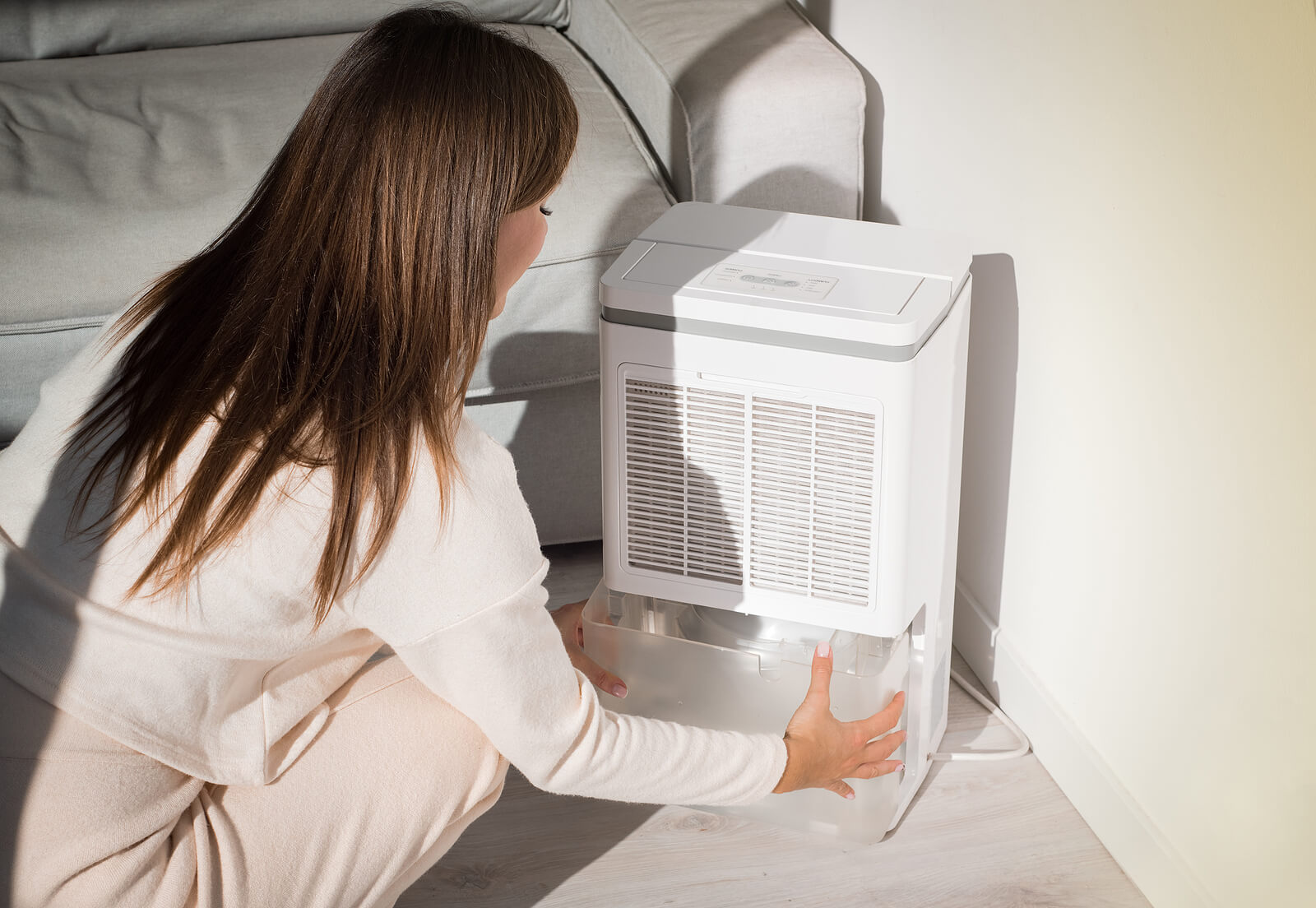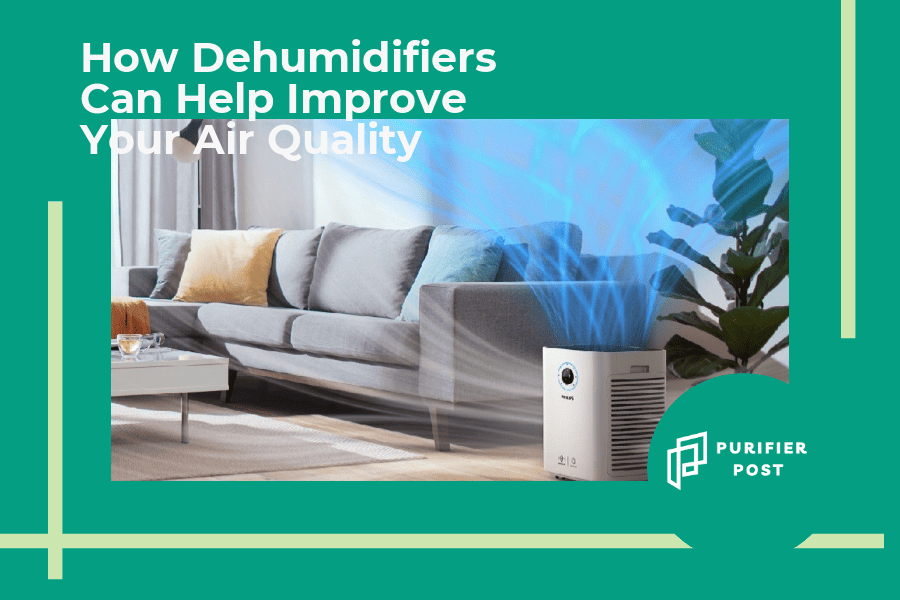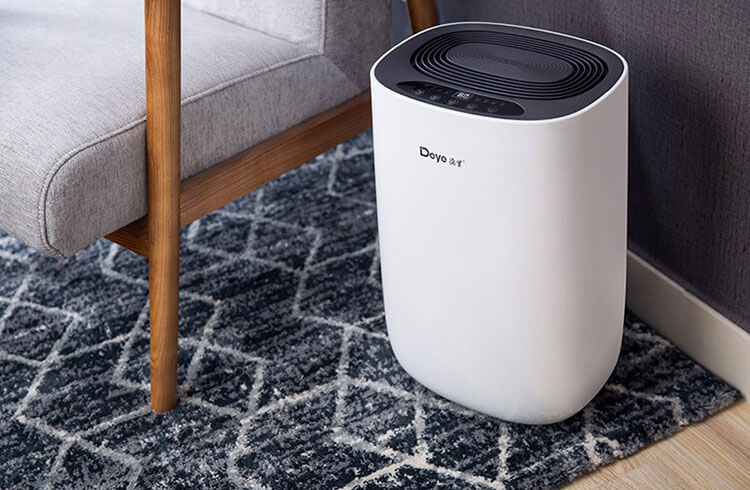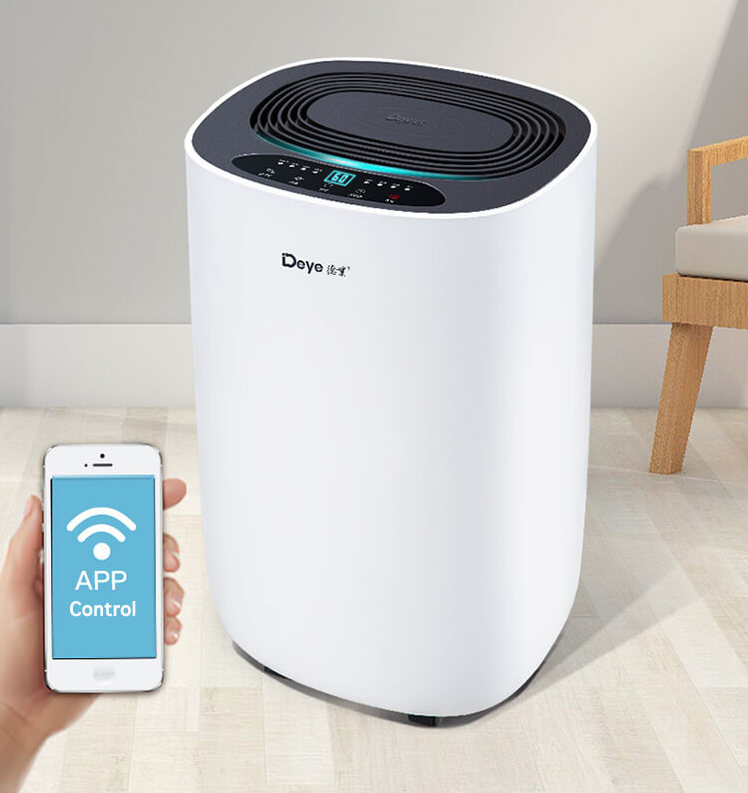If you’re looking for ways to enhance the air quality in your home or office, you might be surprised to learn about the significant impact that dehumidifiers can have. Whether it’s reducing excess moisture, preventing mold and mildew growth, or keeping allergens at bay, the relationship between dehumidifiers and air quality is vital. In this article, we will explore how dehumidifiers work, the benefits they offer, and how they can help create a more comfortable and healthier indoor environment for you and your loved ones. So, if you’re ready to breathe easier and improve the air you breathe, let’s delve into the world of dehumidifiers and discover how they can transform your surroundings for the better.
Understanding air quality
Air quality refers to the level of pollutants present in the air that we breathe. It is a crucial aspect of our overall well-being as poor air quality can have detrimental effects on our health. Understanding air quality involves recognizing the various factors that contribute to it, such as humidity levels, allergens, and pollutants. By gaining a better understanding of air quality, we can take the necessary steps to improve it and create a healthier environment for ourselves and our loved ones.
Importance of air quality
The importance of air quality cannot be overstated. Poor air quality can have severe consequences on our health, ranging from respiratory problems to allergies and even long-term chronic illnesses. Breathing in polluted air can irritate our airways, trigger asthma attacks, and worsen existing respiratory conditions. Moreover, the presence of allergens, mold, and mildew can cause allergic reactions and contribute to the development of respiratory issues. Therefore, it is crucial to prioritize air quality and take active measures to improve it.

Introduction to dehumidifiers
Among the various tools and appliances designed to enhance air quality, dehumidifiers are a valuable addition to any indoor space. Dehumidifiers are devices specifically created to remove excess moisture from the air, reducing humidity levels and creating a healthier environment. They work by collecting the moisture present in the air and then releasing drier air back into the room. By controlling moisture levels, dehumidifiers play a vital role in improving air quality and preventing the growth of mold, mildew, and other harmful particles.
How dehumidifiers work
Absorbing excess moisture
Dehumidifiers have a unique mechanism that allows them to absorb excess moisture present in the air. When the air is too humid, the dehumidifier pulls in the moisture and collects it in a water tank or drains it out through a hose. This process effectively reduces the overall humidity levels in the room, creating a more comfortable and healthier environment.
Reducing humidity levels
By reducing humidity levels, dehumidifiers help combat the negative effects of excessive moisture in the air. High humidity can lead to a range of problems, including musty odors, condensation on windows, and a damp feeling, which can be uncomfortable and potentially harmful. Dehumidifiers work by removing the excess moisture from the air, thereby reducing humidity levels and creating a more pleasant living environment.
Preventing mold and mildew growth
One of the significant advantages of using dehumidifiers is their ability to prevent the growth of mold and mildew. These fungi thrive in damp environments, making them a common problem in areas with high humidity. By reducing moisture levels, dehumidifiers create an inhospitable environment for mold and mildew, effectively inhibiting their growth and preventing potential health issues associated with their presence.

Effects of high humidity on air quality
Increased presence of allergens
High humidity levels contribute to the increased presence of allergens in the air, such as dust mites, pollen, and pet dander. These allergens can trigger allergies and asthma attacks, leading to respiratory problems and discomfort. By controlling humidity with the help of dehumidifiers, the overall presence of these allergens can be reduced, creating a healthier and more comfortable breathing environment.
Worsened respiratory conditions
For individuals with respiratory conditions, such as asthma or chronic obstructive pulmonary disease (COPD), high humidity can exacerbate their symptoms. Humid air can make breathing more difficult and trigger respiratory distress. By using dehumidifiers to maintain optimal humidity levels, individuals with respiratory conditions can breathe easier and experience fewer respiratory problems.
Promotion of bacteria and viruses
High humidity provides an ideal environment for the growth and spread of bacteria and viruses. These microorganisms thrive in moist conditions, increasing the risk of infections and illnesses. By reducing humidity levels, dehumidifiers help inhibit the growth and proliferation of bacteria and viruses, creating a safer and healthier indoor environment.
Benefits of using dehumidifiers
Improved indoor air quality
By effectively controlling humidity levels and reducing the presence of allergens, mold, and mildew, dehumidifiers significantly improve indoor air quality. Clean and dry air creates a more comfortable and healthier living environment for you and your family, reducing the risk of respiratory diseases and allergies.
Reduction of allergens
Dehumidifiers play a vital role in reducing the number of allergens present in the air. By controlling humidity and creating a less favorable environment for allergens such as dust mites and pet dander, dehumidifiers help alleviate allergy symptoms and improve overall respiratory health.
Prevention of mold and mildew
One of the primary advantages of using dehumidifiers is their ability to prevent the growth of mold and mildew. These fungi can cause significant health issues and damage to your home. By maintaining optimal humidity levels, dehumidifiers effectively prevent mold and mildew growth, protecting both your health and the structural integrity of your property.
Enhanced comfort and well-being
Excessive humidity can make the air feel heavy and can lead to discomfort and a lack of overall well-being. By using dehumidifiers to control humidity levels, you can create a more comfortable and pleasant indoor environment. Reduced moisture in the air helps to alleviate feelings of stickiness and discomfort, promoting enhanced well-being for you and your family.

Choosing the right dehumidifier
Calculating the required capacity
When choosing a dehumidifier, it is essential to consider the specific requirements of your space. The capacity of a dehumidifier refers to the amount of moisture it can remove from the air in a specific time frame, usually measured in pints per day. To determine the right capacity, consider factors such as the size of the room, the level of humidity, and the number of occupants. It is recommended to choose a dehumidifier with a capacity that matches your specific needs to ensure optimal performance.
Considering noise levels
Since dehumidifiers are designed to operate continuously, it is crucial to consider their noise levels. Especially if you plan to use the dehumidifier in a living area or bedroom, opt for models that operate quietly to minimize any potential disturbance. Many dehumidifiers come with noise ratings, allowing you to choose one that suits your preferences and needs.
Evaluating energy efficiency
When selecting a dehumidifier, it is important to consider its energy efficiency. Look for models with an ENERGY STAR certification, as they meet strict energy efficiency guidelines set by the Environmental Protection Agency (EPA). Energy-efficient dehumidifiers not only help reduce environmental impact but also contribute to cost savings on your utility bills.
Looking for additional features
Dehumidifiers come with various additional features that can enhance their functionality and convenience. Look for features such as auto-shutoff when the water tank is full, adjustable humidity settings, programmable timers, and digital displays. These features can make the operation and maintenance of your dehumidifier more convenient and user-friendly.
Placement and maintenance of dehumidifiers
Strategic placement for optimal effectiveness
To ensure optimal effectiveness, it is important to strategically place your dehumidifier in the correct location. Position the dehumidifier in an area of the room that has the highest humidity levels, such as near a bathroom or laundry room. Additionally, make sure that the unit is placed away from walls and furniture to facilitate proper airflow. Regularly monitor the humidity levels with a hygrometer and adjust the placement of the dehumidifier as needed.
Proper maintenance to ensure efficiency and longevity
To maintain the efficiency and longevity of your dehumidifier, it is essential to follow proper maintenance practices. This includes regularly cleaning the water tank to prevent the buildup of bacteria and mold, checking and cleaning the air filters, and ensuring that the drainage system is functioning correctly. Regular maintenance will not only ensure optimal performance but also extend the lifespan of your dehumidifier.

Supplementary methods for air purification
Using air purifiers in conjunction with dehumidifiers
While dehumidifiers effectively reduce humidity levels and prevent the growth of mold and mildew, they may not address all air quality issues. To further enhance air purification, consider using air purifiers in conjunction with dehumidifiers. Air purifiers filter out airborne particles and odors, capturing even smaller particles that may have escaped the dehumidifier. By combining these two devices, you can achieve comprehensive air purification for a healthier indoor environment.
Ventilation and air circulation
Proper ventilation and air circulation are essential for maintaining good air quality. Ensure that your space has adequate ventilation, such as windows and exhaust fans, to allow for the exchange of indoor and outdoor air. Promote air circulation by using fans strategically placed around the room. This will help prevent the buildup of stale air and improve overall air quality.
Regular cleaning and dusting
Regular cleaning and dusting of your living space can significantly contribute to improving air quality. Dust and dirt particles can accumulate on surfaces and in the air, reducing air quality and triggering allergies. By dusting and cleaning surfaces regularly, you can significantly reduce the number of airborne pollutants and ensure cleaner and fresher air.
Control of pollution sources
Identifying and controlling pollution sources within your home is vital for maintaining good air quality. Avoid the use of harmful cleaning chemicals, tobacco smoke, and other pollutants that can significantly degrade indoor air. Minimize exposure to these pollutants by using natural and environmentally-friendly cleaning products and establishing smoke-free zones in your home.
Professional assistance for air quality improvement
Consulting with HVAC specialists
When dealing with persistent air quality issues, it may be beneficial to consult with HVAC (heating, ventilation, and air conditioning) specialists. These professionals can assess your home’s ventilation system and provide expert advice on how to improve air quality effectively. They may recommend additional measures such as the installation of air filtration systems or the use of advanced purification techniques to address specific air pollution concerns.
Hiring mold remediation experts
If you suspect or encounter significant mold or mildew growth in your home, it is crucial to seek professional help. Mold remediation experts specialize in identifying, removing, and preventing mold and mildew growth, ensuring that your indoor air quality is restored to a safe and healthy state. With their expertise and specialized equipment, mold remediation experts can mitigate the risks associated with mold and mildew and prevent further contamination.
Utilizing air quality testing services
If you are unsure about the quality of your indoor air, you can utilize air quality testing services. These services involve collecting air samples from your home and analyzing them for various pollutants and contaminants. Air quality testing can provide you with valuable insights into the specific air quality issues you may be facing, helping you better understand the necessary steps to improve the air quality in your living space.
In conclusion, air quality is of utmost importance for our well-being, and dehumidifiers play a crucial role in improving it. By reducing excess moisture, controlling humidity levels, and preventing the growth of mold and mildew, dehumidifiers create a healthier indoor environment. When choosing a dehumidifier, consider factors such as capacity, noise levels, energy efficiency, and additional features. Proper placement and maintenance of dehumidifiers are essential for optimal effectiveness. Moreover, employing supplementary methods like air purifiers, ventilation, regular cleaning, and controlling pollution sources can further enhance air purification. For persistent air quality issues, seek professional assistance from HVAC specialists, mold remediation experts, or utilize air quality testing services. By prioritizing air quality and effectively using dehumidifiers, you can create a healthier and more comfortable living environment for yourself and your loved ones.


Hi, I’m Cohan, the author behind Your Dehumidifier Guide, a website dedicated to helping you create a healthier and more comfortable living environment. With a tagline of “Breathe Easy, Live Better,” my ultimate goal is to provide you with the best dehumidification solutions for your home. Whether you’re looking for the perfect dehumidifier for your bathroom, small room, or basement, I’ve got you covered. Through in-depth reviews and comprehensive buying guides, I aim to equip you with the knowledge to tackle high humidity levels, prevent mold growth, and improve your indoor air quality. Trust me to be your ultimate guide in the world of dehumidifiers.